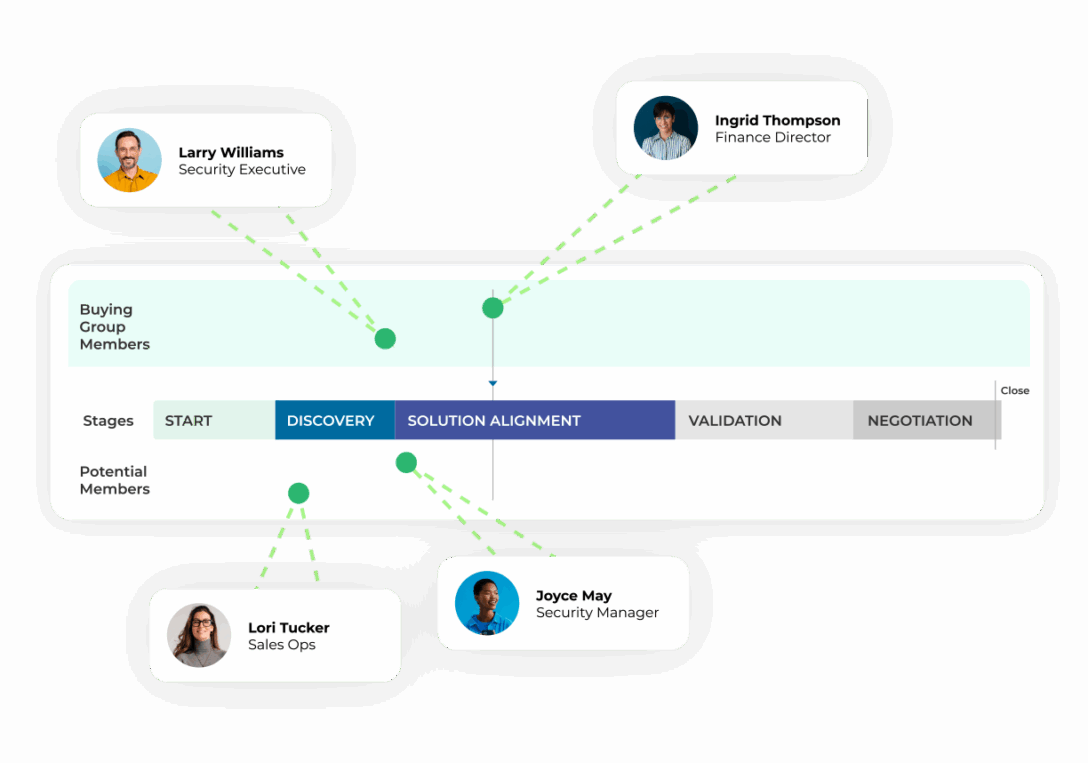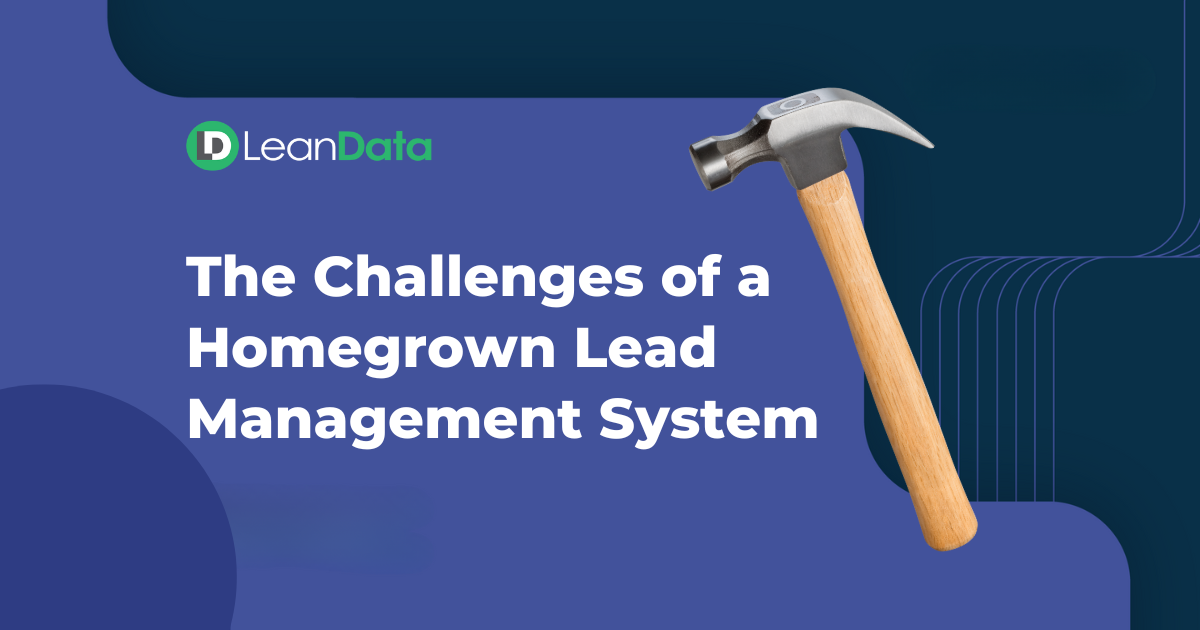The biggest risk to your revenue engine often hides in plain sight: the gap between your marketing automation platform and your CRM.
Prospects fill out high intent forms, signals fire, and excitement builds. Yet by the time sales receives the lead, the moment has passed.
And realistically, those gaps can be the difference between a closed deal and a lost opportunity.
This challenge is not about one vendor or another.
Instead it comes down to the operational cracks that form when two systems have to work together but do not always communicate as expected.
Here we examine the recurring cracks between marketing automation and your CRM and share approaches that leading teams use to close them.

Why Closing Gaps Matters
B2B buyers expect speed and consistency.
A delay of even a few hours in follow-up can erode trust, while incomplete buyer context can derail account strategy. When your automation platform and CRM do not sync, three challenges typically appear:
- The Black Hole Handoff: Leads sit waiting between systems while buyers move on.
- The Hidden Buying Group: CRMs surface a single contact when the true decision-making group includes ten or more people.
- Mismatched Signals and Reporting: Marketing sees engagement signals that never reach sales, leaving attribution and forecasts unreliable.
Each of these challenges leads to missed revenue and wasted effort. The good news is that they can be fixed with structured approaches.
The Black Hole Handoff
The first and perhaps most visible crack is the lag in routing hot leads from marketing automation to CRM. Buyers expect to hear from your team almost instantly. If the sync delay is thirty minutes or even overnight, your competition may already be ahead.
The fix: Trigger-based routing. Instead of waiting for scheduled syncs or manual reviews, your systems can launch workflows the moment a high intent signal appears. This might include:
- Demo requests
- Pricing page visits
- Leads that pass a score threshold
By routing directly on these signals, marketing and sales stay proactive. Plus, by applying service level agreements (SLAs), leaders can measure and enforce response times across teams.

The Hidden Buying Group
B2B buying decisions rarely rest with one individual. Research shows that enterprise deals often involve 6 to 20 stakeholders, sometimes more. Yet when marketing automation tracks engagement, only one name may surface in the CRM.
Reps are left single-threaded, missing the real influencers and decision makers.
The fix: Build visibility into the buying group. Lead-to-account matching ties engaged contacts back to the right account, surfacing context about each person’s role. When reps can see who acts as a champion, who may block, and who holds budget authority, they can plan outreach more effectively.
Next, scoring and routing should move beyond individual leads to include group level engagement.
If multiple stakeholders are engaging across content, webinars, and meetings, the account should move up in priority. Consequently sales teams spend their energy where the likelihood of success is highest.
Mismatched Signals and Broken Reporting
The third major challenge appears when marketing and sales rely on different views of the same account.
Marketing sees clicks, downloads, and webinar attendance. Sales sees none of it in their CRM. As a result, opportunities appear cold even when real interest exists. Attribution breaks down and confidence in the forecast erodes.
The fix: Establish a shared dictionary of signals. A signals dictionary defines what actions matter, who owns the follow-up, and how quickly teams must respond.
Examples include:
- New opportunity created in CRM
- Product sign-up event
- First party or third party intent signals
- Meeting attended or email opened
When signals flow into both systems consistently, sales and marketing finally speak the same language. Reports align, outreach becomes timely, and leaders gain trust in their forecasts.
Real-World Lessons From the Field
To see how these system gaps play out in practice, it helps to look at how organizations approach this challenge. Two case studies in particular stand out.
Groq’s Story
Groq faced rapid growth, a surge of inbound sign-ups, and a backlog of leads slipping through the cracks. Their small team needed to act fast to prevent prospects from waiting weeks for a response. By rethinking how they used HubSpot and Salesforce together, Groq turned a potential liability into a new level of efficiency:
- Added HubSpot CRM to automate quick replies for leads not ready for enterprise sales
- Prioritized routing based on business needs and value alignment
- Integrated with Salesforce to unify accounts and leads
- Improved SLAs from 27 days to 9 hours
- Created visibility into one million new leads tied to accounts
LeanData’s Story
LeanData itself had to address cracks created by legacy processes and an older MAP setup. Sync delays, broken lead scoring, and missing context were preventing clean handoffs. By auditing and rebuilding their execution framework, they restored trust across their revenue teams:
- Audited and remapped Salesforce sync fields
- Rebuilt lead scoring models to match current processes
- Reconstructed handoff flows between marketing and sales
- Achieved cleaner data and higher quality opportunities
- Strengthened cross-functional trust in the GTM motion
Both examples prove that system cracks are not permanent. With intentional design and attention to process, teams can dramatically improve speed, trust, and results.
A Framework for Clean GTM Execution
Fixing the cracks between marketing automation and CRM does not happen in a single step. Teams that succeed often follow a repeatable framework that includes:
- Signals: Decide what matters and when action is required
- Rules: Define who owns which step and response times
- Ownership: Assign accountability for workflows end to end
- Quality Assurance: Test and catch issues before they scale
- Insights: Measure the right metrics across both systems
This framework ensures that your GTM execution is consistent, scalable, and trusted across the organization.
Protecting Revenue Through Better System Alignment
The two-system challenge may sound technical, but its impact is financial.
Missed SLAs lead to lost revenue. Single-threaded deals lower win rates. Incomplete signals create forecast risk. Confused attribution misallocates spend.
Closing gaps between marketing automation and CRM is not about eliminating tools. It is about building alignment across people, processes, and systems so your go-to-market teams can focus on what matters: engaging buyers at the right moment with the right context.
Enterprise teams that commit to trigger based routing, buying group visibility, and signal alignment will see faster cycles, stronger forecasts, and more confident revenue outcomes.












